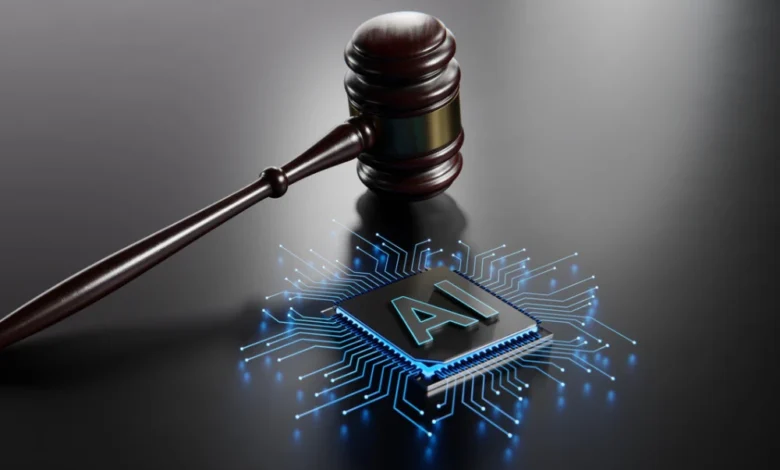
Artificial intelligence is no longer a futuristic concept; it’s a present-day tool that is reshaping industries, streamlining operations, and unlocking new opportunities. From automating routine tasks to providing deep analytical insights, AI integration is becoming a benchmark for innovation and efficiency. Yet, with this great power comes significant responsibility. As businesses rush to adopt AI, many overlook the critical frameworks needed to manage these powerful systems ethically and effectively. This is where AI governance and compliance enter the picture, serving not as a barrier to innovation, but as a guardrail that ensures its longevity and trustworthiness.
Navigating the complexities of AI requires a structured approach. Without clear rules and oversight, companies risk facing a host of problems, including biased decision-making, data privacy breaches, and a lack of accountability. These issues can lead to significant financial penalties, reputational damage, and a loss of customer trust that can be difficult, if not impossible, to recover. Future-proofing your business in the age of AI means embedding governance into the very fabric of your strategy. It involves creating a system of checks and balances that guide the development, deployment, and ongoing management of all artificial intelligence initiatives. This proactive stance ensures that your AI tools operate safely, ethically, and in alignment with your organization’s core values.
The Foundations of AI Governance
AI governance is the comprehensive framework of rules, policies, standards, and processes that an organization puts in place to direct and control its use of artificial intelligence. It’s about ensuring that AI systems are developed and used responsibly. This involves addressing key questions: How do we ensure our AI models are fair and unbiased? Who is accountable when an AI system makes a mistake? How do we protect the data used to train and operate these models? A robust governance structure provides clear answers to these questions.
A central component of this structure is the implementation of an AI governance solution. This is not just a single piece of software but a holistic system that combines technology, processes, and people to provide centralized oversight. It offers visibility into how AI models are being built, tested, and used across the organization. This kind of solution helps to manage risks by continuously monitoring model performance for issues like drift, where a model’s accuracy degrades over time, or bias, where it unfairly favors certain groups over others.
Effective governance starts with establishing a cross-functional team or committee. This group should include representatives from legal, IT, data science, and business leadership. Their primary role is to define the organization’s ethical principles for AI and translate them into actionable policies. These policies should cover everything from data handling and model validation to user consent and transparency. For instance, a policy might mandate that any AI system used for hiring must be rigorously tested for demographic bias before it is deployed.
Aligning AI with Compliance and Regulation
The regulatory landscape for artificial intelligence is rapidly evolving. Governments and industry bodies worldwide are introducing new laws and standards to manage the risks associated with AI. The EU AI Act, for example, categorizes AI systems based on their risk level and imposes strict requirements on high-risk applications. Similarly, various jurisdictions are strengthening data privacy laws, which directly impacts how AI models can be trained and used. Staying compliant is not just a legal necessity; it is a fundamental aspect of risk management.
Compliance in AI means ensuring that your systems operate within the legal and ethical boundaries set by these regulations. This can be a daunting task, as it requires a deep understanding of both the technology and the legal requirements. A comprehensive AI governance solution is essential for maintaining this alignment. It can help automate compliance checks, maintain detailed records for audits, and generate reports that demonstrate adherence to standards. Imagine an AI system used in healthcare for diagnosing diseases. A governance framework would ensure that the system complies with patient data privacy laws, has received the necessary regulatory approvals, and its decision-making process is transparent enough to be explained to both doctors and patients.
Furthermore, compliance is not a one-time event. As regulations change and AI models evolve, organizations must continuously monitor and adapt. This is where the dynamic nature of an effective governance framework becomes invaluable. It provides the agility to update policies, retrain models, and adjust processes in response to new legal mandates, ensuring the business remains on the right side of the law without stifling innovation. This proactive approach to compliance helps build a reputation as a trustworthy and responsible organization.
Building Trust Through Transparency and Accountability
For AI to be truly successful, it must be trusted by employees, customers, and the public. Trust is built on a foundation of transparency and accountability. People are more likely to accept and engage with AI systems when they understand how they work and know that someone is accountable for their outcomes. Governance provides the mechanisms to achieve both.
Transparency in AI means making the decision-making process of an AI model as understandable as possible. While some complex models, like deep learning networks, can be difficult to interpret, the goal is to provide clear explanations for their outputs, especially when those outputs have a significant impact on people’s lives. For example, if an AI model denies a loan application, the applicant has a right to know the reasons behind that decision. A good governance framework will require that models are designed with “explainability” in mind and that processes are in place to communicate these explanations effectively.
Accountability is about assigning clear responsibility for the outcomes of AI systems. When an AI makes a mistake, who is at fault? Is it the data scientist who built the model, the company that deployed it, or the vendor who supplied the software? An AI governance solution helps clarify these lines of responsibility. It establishes clear roles, from the “model owner” who is responsible for a specific AI’s performance to the oversight committee that sets the overall strategy. This structure ensures that if something goes wrong, there is a clear process for investigating the issue, rectifying it, and preventing it from happening again. By creating this chain of accountability, you demonstrate a commitment to responsible AI that fosters deep and lasting trust.
Implementing Your AI Governance Framework
Putting an AI governance framework into practice is a journey, not a destination. It requires a thoughtful, phased approach that is tailored to your organization’s specific needs and maturity level. The first step is often an assessment of your current AI landscape. What AI tools are you already using? What are the potential risks associated with them? This initial audit provides a baseline and helps prioritize your governance efforts.
Once you have a clear picture of your AI usage, you can begin to build the core components of your framework. This includes forming your governance committee, drafting your initial set of AI principles and policies, and identifying the right tools to support your efforts. When selecting an AI governance solution, look for platforms that offer features like a centralized model inventory, automated risk monitoring, bias detection, and robust reporting capabilities. The right technology will make it significantly easier to enforce policies and maintain oversight at scale.
A critical part of implementation is education and training. Everyone in the organization, from developers to business users, needs to understand their role in responsible AI. Training programs should cover the company’s AI policies, ethical guidelines, and the practical steps employees can take to mitigate risks. Fostering a culture of responsibility is just as important as implementing the right processes and tools. When the entire organization is aligned on the importance of ethical AI, governance becomes a shared effort rather than a top-down mandate. This cultural shift is what truly future-proofs the business, allowing it to innovate confidently within a safe and structured environment. The search for the perfect AI governance solution is a key step in this process, as it provides the technical backbone for your strategic vision.
Final Analysis
Integrating AI into your business is no longer an option but a necessity for staying competitive. However, unlocking its full potential requires more than just deploying the latest technology. It demands a commitment to managing these powerful systems responsibly. An AI governance and compliance framework is the essential blueprint for achieving this. It provides the structure needed to navigate the ethical, legal, and operational challenges of AI, ensuring that your innovations are not only effective but also fair, transparent, and trustworthy.
By establishing clear policies, ensuring regulatory compliance, and fostering a culture of accountability, you transform AI from a potential liability into a sustainable strategic asset. This proactive approach does more than just mitigate risk; it builds a foundation of trust with your customers, empowers your teams to innovate safely, and ultimately secures your organization’s place in the future. Investing in AI governance is not about slowing down; it’s about building the momentum to move forward with confidence and integrity for years to come.






